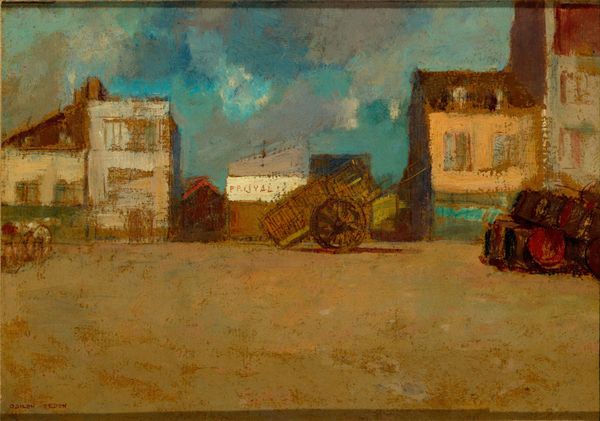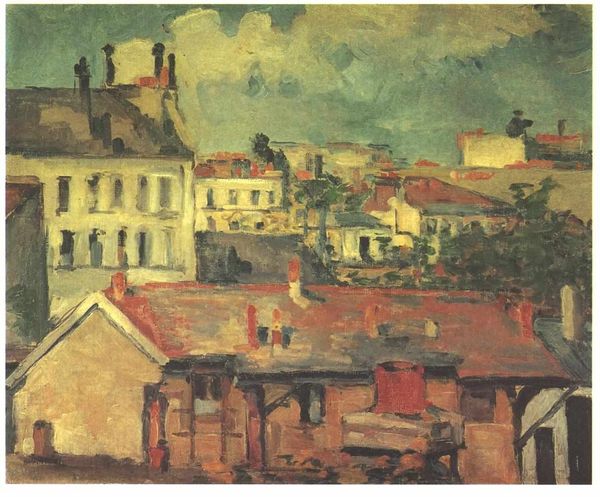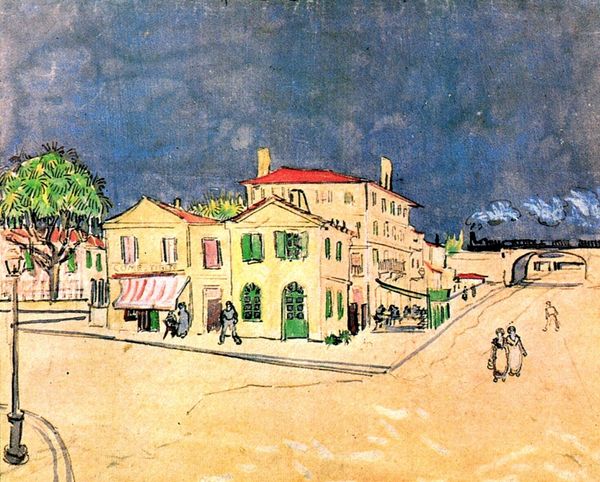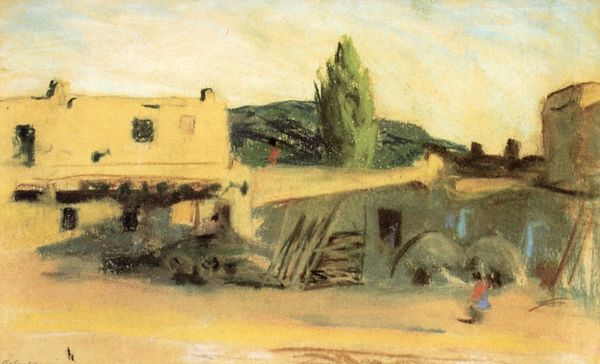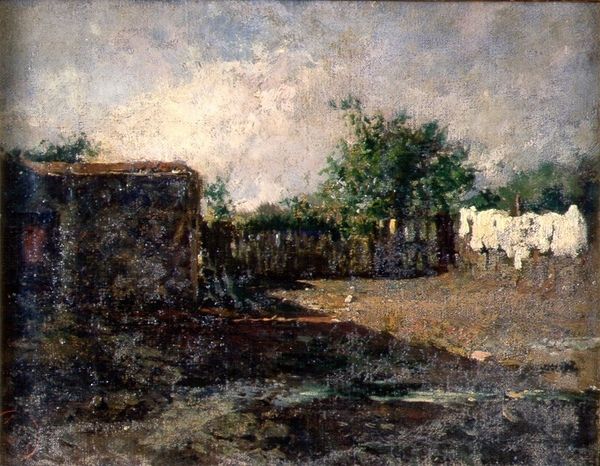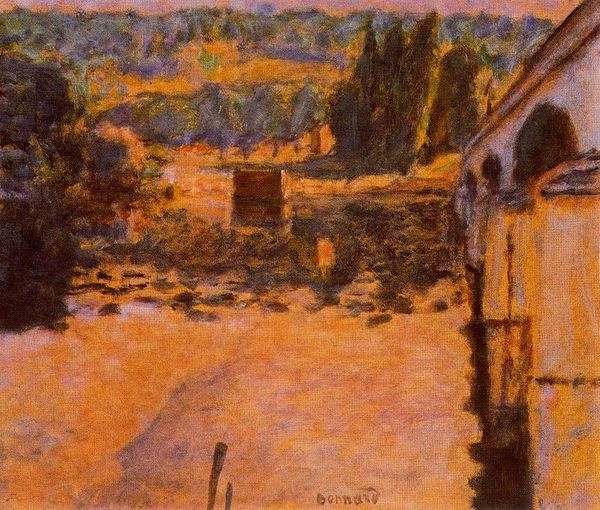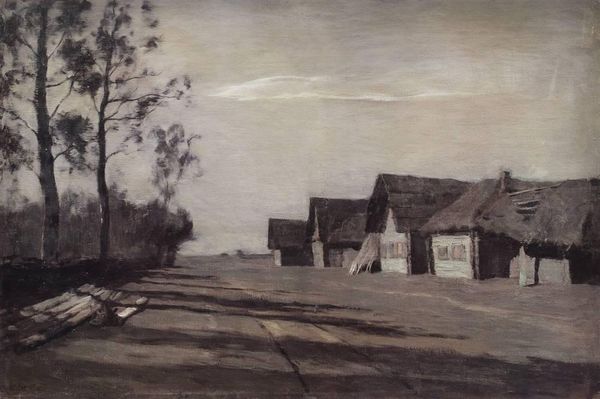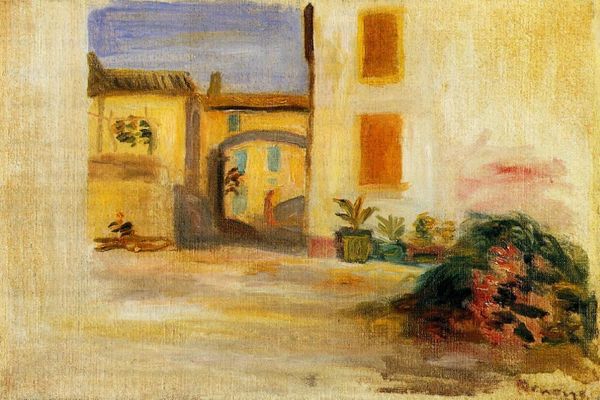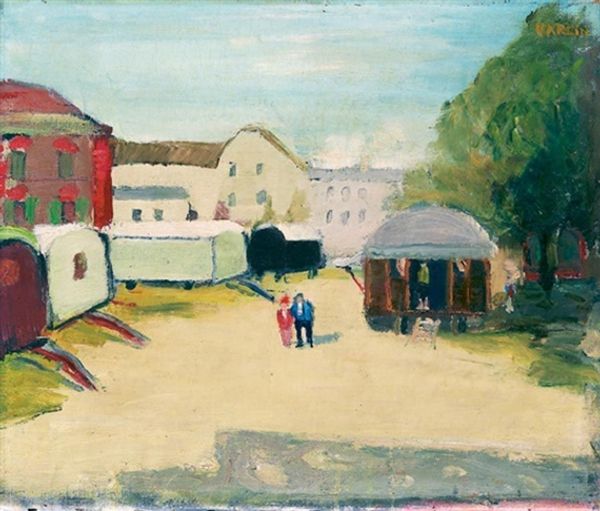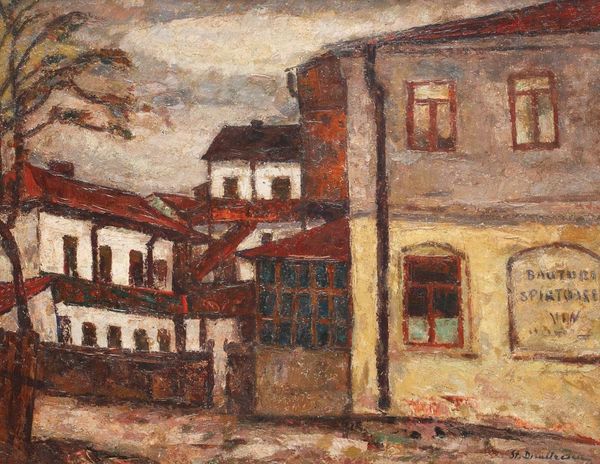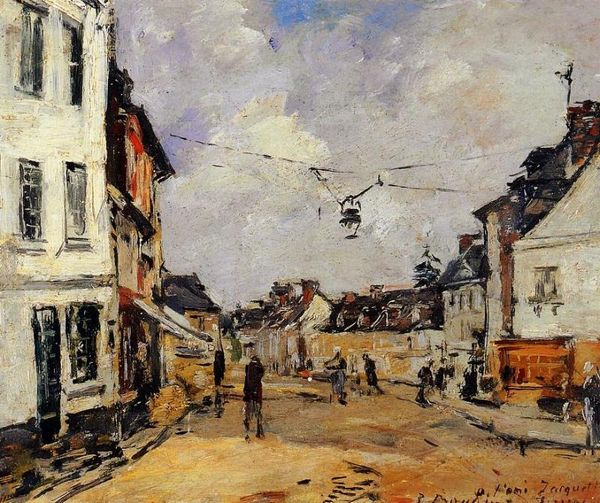
painting, oil-paint
#
painting
#
impressionism
#
oil-paint
#
landscape
#
coloured pencil
#
cityscape
#
genre-painting
Dimensions: 19.05 x 27.31 cm
Copyright: Public domain
Editor: So, this is "Near the Harbor" by Odilon Redon, painted in 1880 using oil paints. It's a street scene, pretty muted and gray overall. The more I look, though, the more I notice what seem like traces of vibrant colors hiding under the surface. What do you see in this piece? Curator: I see a painting that challenges the clean, optimistic narratives often associated with Impressionism. This harbor scene isn't about leisure or beauty. Instead, it’s muted color palette, nearly oppressive stillness, and central inclusion of working tools speaks volumes about labor, class, and the often unseen realities that fuel the wealthy artistic classes. Editor: You mentioned labor and class. Could you explain more how those themes connect with the visual elements of the painting? Curator: Certainly. Notice how the architectural structures loom, yet are somehow incomplete, almost impermanent. The centered placement and somewhat dilapidated state of the cart. These details point to a society structured around transience and potentially exploitation. We are drawn to the potential, if subtle, suffering this exploitation created, versus the benefits. Do you notice anything about the perspective, the angle from which we, as viewers, are observing? Editor: It's like we're at street level, not elevated, placing us right in the thick of it. I hadn't considered that. Curator: Exactly. And consider Redon's choice to portray a harbor not bustling with activity, but stagnant, weighed down by unseen pressures. How might we connect this sense of weightedness, and lack of celebration, with social critique? Editor: I guess it's about showing what's *really* there instead of glossing over the harder aspects of life for the working class in this kind of environment. I see now there’s way more to it than just being a landscape. Curator: Precisely. And through such reflections, we see how artworks, seemingly simple on the surface, engage deeply with socio-political conditions, challenging us to expand and scrutinize our own assumptions about art, history and experience. Editor: Thanks, I now see it as more of an invitation for social consciousness.
Comments
No comments
Be the first to comment and join the conversation on the ultimate creative platform.
